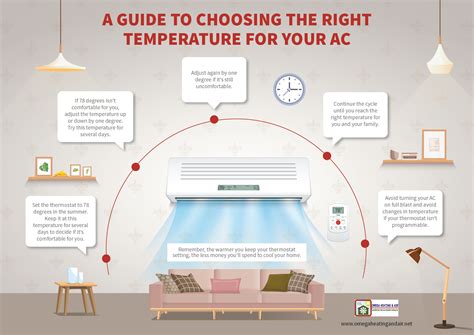The Right AC Temp: Comfort and Savings Combined
Finding the perfect air conditioning temperature is a balancing act. Too cold, and you're shivering and wasting energy; too warm, and you're uncomfortable and still running the AC. This guide explores the optimal AC temperature settings for both comfort and energy savings, considering factors like personal preference, health, and energy efficiency.
What's the Ideal AC Temperature?
The commonly recommended temperature for air conditioning is 78°F (26°C). However, this is just a starting point. The "ideal" temperature is subjective and depends heavily on individual preferences and circumstances. Factors such as age, health conditions, activity level, and even the humidity level in your home play significant roles.
While 78°F might feel comfortable for some, others might prefer a slightly cooler or warmer setting. The key is to find the sweet spot where you feel comfortable without excessively straining your AC unit or racking up your energy bill.
How to Find Your Personal Comfort Zone
Experimenting with different temperature settings is crucial to determine your ideal comfort level. Start with the recommended 78°F and adjust incrementally, observing how you feel throughout the day. Consider these factors:
- Personal Preference: Some people are naturally more sensitive to temperature than others. Don't hesitate to adjust the thermostat to suit your individual needs.
- Activity Level: If you're highly active, you might prefer a slightly cooler temperature. Conversely, if you're mostly sedentary, a warmer setting might suffice.
- Humidity Levels: High humidity can make warmer temperatures feel much more uncomfortable. A dehumidifier can significantly improve comfort at slightly warmer settings, saving you energy.
- Health Considerations: Older adults and those with certain health conditions might require slightly warmer temperatures to avoid health complications. Consult your doctor if you have any concerns.
Saving Energy Without Sacrificing Comfort
While comfort is paramount, energy savings shouldn't be overlooked. Here are several strategies to maintain a comfortable temperature while minimizing energy consumption:
- Programmable Thermostat: Utilize a programmable or smart thermostat to automatically adjust temperatures based on your schedule. Lower the temperature when you're home and raise it when you're away or asleep.
- Regular Maintenance: Ensure your AC unit is regularly serviced and cleaned. A well-maintained system operates more efficiently, saving you energy and money.
- Insulation and Sealing: Proper insulation and sealing of windows and doors significantly reduce energy loss, making your AC work less hard.
- Strategic Use of Fans: Ceiling fans and portable fans can help circulate air, making a slightly warmer temperature feel more comfortable.
- Consider Natural Cooling: Open windows during cooler parts of the day to take advantage of natural ventilation.
What Temperature Should I Set My AC at Night?
Many people find it comfortable to raise the thermostat a few degrees at night while sleeping. A setting of 75°F (24°C) or even slightly warmer is often sufficient for a good night's sleep. Your body temperature naturally drops while you sleep, so you won't need as much cooling.
Is it Better to Keep the AC Running All Day or Turn it Off and On?
While the instinct might be to turn the AC off when leaving, it's generally more energy-efficient to keep it running at a slightly higher temperature. Turning it off and on requires the unit to work harder to cool the space back down, consuming more energy in the long run.
What's the Best AC Temperature for Babies and Children?
Maintaining a slightly cooler temperature for infants and young children is advisable, around 72°F (22°C). Babies and children are more susceptible to heatstroke. Always prioritize their safety and comfort.
Conclusion: Finding the Perfect Balance
Finding the right AC temperature is a personal journey. By understanding the factors influencing comfort and energy efficiency, and experimenting with different settings, you can create a comfortable and energy-efficient home environment. Remember that regular maintenance and smart usage practices can further optimize your energy savings without compromising on comfort. Don't hesitate to adjust your thermostat as needed to ensure both your comfort and your wallet are happy.

